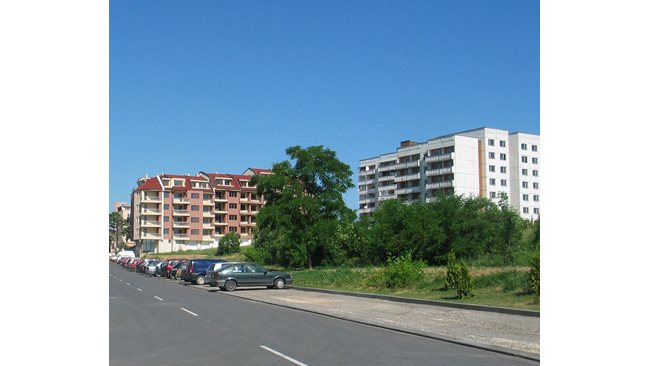Varna is the only one of the big cities where real estate is getting cheaper
New construction with much smaller price growth than the existing one
Despite expectations at the beginning of last year that the pandemic, lockdowns and the crisis will limit the real estate market and reduce house prices, this did not happen. On the contrary – 2020 ends with an annual increase of 5.4% in house prices, according to NSI data for the fourth quarter of last year, published on Friday.
This growth is slightly higher than in the previous quarters of 2020, and although it is not very large against the background of the last three years, in practice it shows that the real estate market has been almost unaffected by the crisis.
Since the pandemic, only in the second quarter of the year, ie. At the height of the first lockdown, property price growth was quite low – only 2.9% on an annual basis. That’s when – in the months of April, May and June,
the market
he was dead,
look around
decreased
and the prevailing mood among sellers was that times were coming when it was unprofitable to sell because of the expected drop in prices. From then until the end of the year, however, this trend was gradually overcome.
The NSI monitors the market for new and existing housing separately and makes an impression that the difference in price growth between the two types of properties is quite large –
the new ones are
more expensive
only 2.3%, and
existing
– by 7.2%
There were similar differences in the previous quarters. According to people familiar with the matter, there are basically two reasons – on the one hand, newly built homes are generally more expensive and in the current conditions it is not realistic to increase their prices much. On the other hand, in a market that remains lively, many buyers are turning to the lower price segment and prices there are rising more significantly.
It is not yet possible to assess the extent to which the growth of housing prices in Bulgaria is large compared to other member states, as Eurostat data for the fourth quarter will be released next week. Last week, however, Knight Frank released its data, which showed that it ranked 38th in the world in terms of housing prices on an annual basis in the third quarter.
at the end of
the year
Bulgaria
it’s already
came across
in 29th place
In the six cities with a population of over 120 thousand inhabitants, whose real estate market the NSI monitors separately, the biggest increase is in the capital. It is 4.5% compared to a year earlier for new homes and as much as 11.3% for existing ones (see infographic on the right).
In Plovdiv, the new construction even decreased in price on an annual basis by 0.6%, but the old one increased by 6.3%.
Curious is the situation in Varna – the only large city in Bulgaria, where housing is cheaper by an average of 2.3%.
This is not a novelty, in the sea capital the properties are getting cheaper all year round. NSI data for Varna and Burgas do not include property prices in the resorts around the two cities, but only homes in the regional center.
The most probable explanation is in the weak tourist season, as a significant part of the buyers of real estate in the seaside villages are foreigners who
rest first
of ours
Black Sea coast
and after this
decide
to buy
property there
In addition, in recent years, many Russians living on the Black Sea coast have preferred to vacate their property. However, it should be borne in mind that housing prices in Varna are generally high and comparable to those in the capital and Plovdiv.
One of the main reasons for the current rise in house prices, and the revival of the real estate market in general, lies in the low interest rates on mortgage loans,
which
on its own
historical
minimum
For housing loans in BGN, the average interest rate in February fell by another 0.18 percentage points and reached 2.79%.
However, it is known that banks often offer promotions and discounts and the interest rate may be lower.
In the midst of the first lockdown in the spring many vaults
limited
the release
of new
mortgage loans
especially for professions that were known to suffer from restrictions. In addition, they dramatically changed the rate of financing when buying a home from 90 and even 100% before to 60-70% of the value of the acquired property after the start of the pandemic. They also stopped lending for the purchase of green homes.
Only a few months later, however, the restrictions were gradually lifted. In the middle of the summer and in the autumn the credit counselors started to report a large growth of the applied and granted loans, which reached 20% at the end of the year and this to some extent explains the growth of the housing prices.
– .


